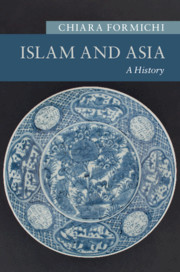Book contents
- Islam and Asia
- New Approaches to Asian History
- Islam and Asia
- Copyright page
- Dedication
- Contents
- Figures
- Maps
- Boxes
- Sources
- Preface
- Acknowledgments
- Note on Transliteration and Foreign Terms
- Maps
- Introduction
- 1 Islam across the Oxus (Seventh to Seventeenth Centuries)
- 2 Becoming Muslim (Seventh to Eighteenth Centuries)
- 3 Networks and Renewal (Thirteenth to Nineteenth Centuries)
- 4 Pan-Islamism and Nationalism (Nineteenth and Twentieth Centuries)
- 5 Muslims in the Nation-State (1940s to 1960s)
- 6 New Imaginations of Piety (1960s to 1990s)
- 7 Islam as Resistance
- 8 De-centering Islamic Authority
- 9 Studying Asia and Islam
- Glossary
- Notes
- Index
- New Approaches to Asian History
- References
7 - Islam as Resistance
Published online by Cambridge University Press: 16 April 2020
- Islam and Asia
- New Approaches to Asian History
- Islam and Asia
- Copyright page
- Dedication
- Contents
- Figures
- Maps
- Boxes
- Sources
- Preface
- Acknowledgments
- Note on Transliteration and Foreign Terms
- Maps
- Introduction
- 1 Islam across the Oxus (Seventh to Seventeenth Centuries)
- 2 Becoming Muslim (Seventh to Eighteenth Centuries)
- 3 Networks and Renewal (Thirteenth to Nineteenth Centuries)
- 4 Pan-Islamism and Nationalism (Nineteenth and Twentieth Centuries)
- 5 Muslims in the Nation-State (1940s to 1960s)
- 6 New Imaginations of Piety (1960s to 1990s)
- 7 Islam as Resistance
- 8 De-centering Islamic Authority
- 9 Studying Asia and Islam
- Glossary
- Notes
- Index
- New Approaches to Asian History
- References
Summary
Jihad, a heavily loaded word in the post-9/11 discourse, has in fact many layers, in theological and historical terms. This chapter investigates how the anti-Soviet resistance to the invasion and occupation of Afghanistan in the 1980s turned this Central Asian country into a receptacle of religiously oriented ideologues and militants from all over the world. The social and political transformations of the 1960s and 70s, the conflation of local self-determination, radicalization of refugees, absorption of foreign militants, the charisma of a Palestinian Muslim Brother, and the wealth of a well-connected Saudi man all come together in shaping the Afghan jihad as a symbolic and imagined site of resistance to outside forces for the global umma. If in the 1980s jihad had carried a positive connotation of liberation, in the aftermath to the 9/11 attacks labeling a movement as “jihadist” has become a convenient way for governments to tackle unrest in Muslim areas, even where struggles had been taking place for decades without much connection to Islamist aspirations, as seen in the cases of Southern Philippines, Indonesia, Southern Thailand, Kashmir, and Western China.
Keywords
- Type
- Chapter
- Information
- Islam and AsiaA History, pp. 206 - 235Publisher: Cambridge University PressPrint publication year: 2020

